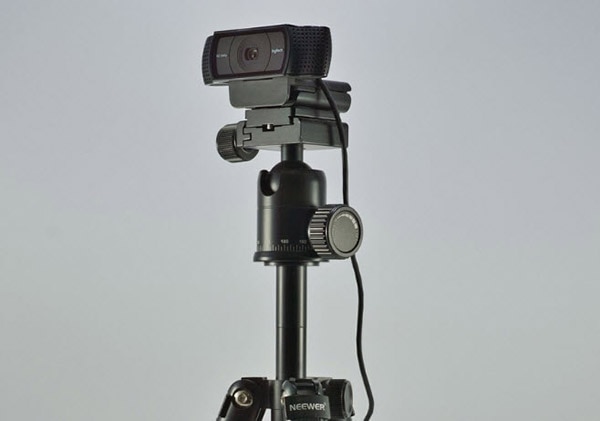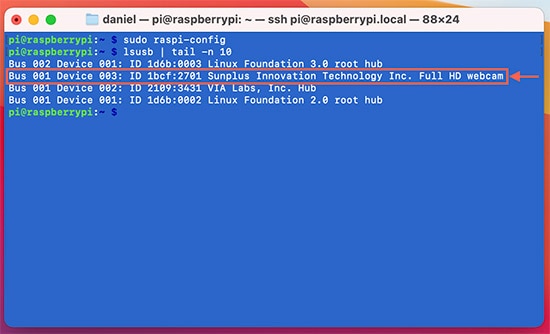制造商零件编号 SC1112
SBC 2.4GHZ 4 CORE 8GB RAM
Raspberry Pi

Experiencing camera-related problems on a Raspberry Pi can be frustrating and easily hinder a project’s progress. However, following this article's simple, well-structured troubleshooting approach, you can quickly resolve the most common issues.
You should start by ensuring that your Raspberry Pi runs the latest OS version and that you upgrade the programs on the little single-board computer, for example, using apt:
sudo apt update sudo apt upgrade
Problems you might experience may boil down to bugs in the firmware, drivers, or external programs, and updating these programs may already address camera-related issues.
It’s worth noting that the newer Raspberry Pi models can draw significantly higher currents than the older models. Updating that old 5V USB power supply may be worthwhile, especially when using the Pi with external USB devices that draw additional currents. It’s recommended to use the official Raspberry Pi power supply, or a similar, high-quality device rated to deliver at least 3 amperes.
It may be worth trying a different camera, especially when using a third-party USB device. While device compatibility has massively improved over the last few years, some cameras may still refuse to play nicely with the Raspberry Pi. Finally, hardware failures are always possible, and it may be worth plugging the camera into a known-good device, such as a desktop PC, and verifying that the USB device operates as expected.
When using a Raspberry Pi Camera module, start troubleshooting by inspecting the ribbon cable connection on both devices. The cable must sit straight in the small, white connector and be pushed all the way down to ensure it makes good contact. However, it is not necessary to force the cable in if it does not want to go down anymore, and the bare metal on the ribbon cable may poke out a bit, depending on manufacturing tolerances.
It's crucial to double-check that you’ve plugged the camera into the correct connector on the board and that the cable is oriented the right way. It's easy to mistake the Raspberry Pi's display connector for the camera connector, as they share the same plug but are not interchangeable on older Pi boards.
Finally, if you are using older versions of Raspbian, remember to activate the Raspberry Pi camera module in raspi-config. However, this step is no longer necessary in the more recent OS versions.
Apart from using a different power supply, the simplest thing you can do when facing USB camera-related problems on a Raspberry Pi is plug the device into a different USB port. Some devices may require more power or a higher data transmission rate that only USB 3.0 can offer, so it’s worthwhile plugging the camera into a different port.
Another key step in troubleshooting USB camera-related issues on a Raspberry Pi is to check the system logs for USB device detection. Whenever a USB device is connected to or detached from the computer, an entry should be visible in the system’s event logs. The following command prints the most recent ten lines of the system log:
dmesg | tail -n 10
Similarly, the following command only prints the last ten USB-related entries:
lsusb | tail -n 10
The log should contain messages about the device being plugged in and removed:

This image shows the last four entries in the system’s USB message log. The highlighted line indicates that the system correctly detects when the camera is plugged in.
When the system logs list the device-related events, you can use the following command to take a look at the camera’s available video devices:
v4l2-ctl --list-devices
This command lists all video devices available to the system. The camera may contain multiple sub-devices. However, camera0 or video0 is typically the right one to use. Nevertheless, it may be worth trying the other devices.
At this point of the troubleshooting process, the camera is connected to the Raspberry Pi correctly, and the OS detects the device and lists it under the available device files. If the camera still doesn’t work in a custom project’s software, you can try external tools to verify that other programs can access and process the camera stream.
If you are working with a Raspberry Pi running a desktop environment, installing the VLC media player can be a useful step. By instructing the program to grab a video stream from the camera and display it in the media player, you can verify the camera's functionality. The following line installs the player software:
sudo apt install vlc
The following option in the desktop environment’s applications menu starts the media player:
 Use the applications menu to start VLC Media Player
Use the applications menu to start VLC Media Player
After launching the program from the desktop, initiate a stream by using the main menu bar and selecting ‘Media’ and then ‘Open Capture Device…’:
 Use the highlighted menu entry to make the capture device pop-up appear.
Use the highlighted menu entry to make the capture device pop-up appear.
In the dialogue that pops up, ensure that the capture mode is set to “video camera,” and then select the correct device from before. Finally, the play button starts the stream:
 Follow the highlighted steps to start a live camera stream in VLC.
Follow the highlighted steps to start a live camera stream in VLC.
This approach usually works well and is reliable. However, it requires a running desktop environment, which may not be suitable for a headless setup.
Thus, you can use raspi-still (for the camera module) or fswebcam (for USB cameras) to capture a single frame from the camera. You can then transfer the image to a desktop PC, for example, using SCP, before reviewing it:
raspistill -w 1280 -h 720 -o image.jpg
fswebcam -d /dev/video0 -r 1280x720 image.jpg
While this approach does not require an active desktop environment, the command-line programs offer numerous options that may be tricky to configure, especially for newcomers unfamiliar with working with the Linux CLI.
When troubleshooting camera problems on a Raspberry Pi, it's important to start with the basics. You should first verify that the Raspberry Pi software is up to date and that they are using a power supply that can deliver sufficient power to the computer and any connected USB devices. This is a common cause of camera issues and should not be overlooked.
Next, you should investigate whether the OS detects the camera being plugged in and removed from the system. If the computer fails to detect the camera, it may be worth trying it on a different computer to verify that it functions as intended.
For users of the camera module, it's vital to pay attention to how the device is connected to the SBC. Mixing up the camera and display connectors on older Raspberry Pi boards or plugging the camera in the wrong way is a common mistake. Similarly, the ribbon cable should be pushed all the way down without being forced in any farther than it wants to go.
Finally, you can utilize various programs to verify that the camera image stream is active and accessible. The program choice depends on many factors, but it often boils down to whether or not a desktop environment is in use.